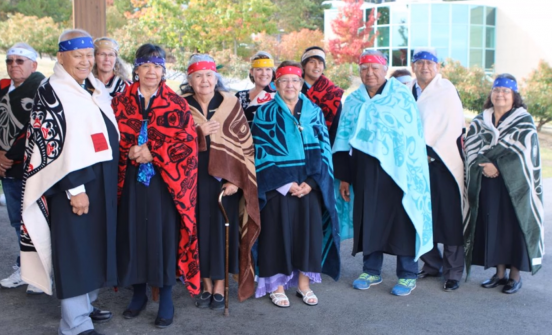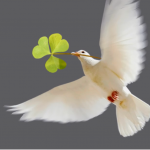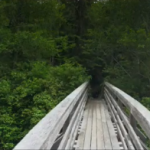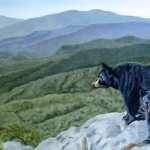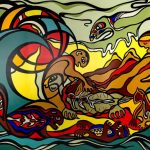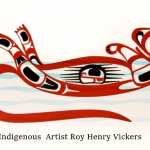I began my spoken letter presentation with a few images from Canadian residential schools, overtop of this I played music from a Health Canada presentation on reconciliation, this was done to show who/and what this presentation was going to be about. Towards the end of the song clip I added an image from the Assembly of First Nations that mapped out residential schools, I believe this proves that residential schools plagued our nation and touched nearly every province and territory. I included an audio clip from the Health Canada Reconciliation video, that features a exert of a speech from Senator Murray Sinclair, who was the chairperson for the Truth and Reconciliation Commission. Murray Sinclair states in this clip “there must be awareness, acceptance, apology, atonement and action.” I believe this prominent first nations man has captured the essence of what we as Canadian’s owe the residential school survivors themselves and their families. I included both the logo of the Mi’kmawey Debert Cultural Centre and pictures of the survivors who shared their stories, because these people and this project deserve our recognition and thanks. I Included several CBC News article titles and pictures to highlight first the conditions of residential schools and second the current struggles indigenous Canadian’s are faced with. I incorporated statistics from the Assembly of First Nations to bring attention to the inequality that is still faced by survivors and their descendants today. These shortcomings are major issues that need to be addressed prior to reconciliation, without addressing these first politicians’ platitudes reek of disingenuity so I did not want to discuss reconciliation myself without first acknowledging it is not something the government deserves. I included an image from CTV news to highlight the ongoing water crisis in First Nations Communities which I believe exemplifies the difference between talking about somethingpublically and actually making a difference. This image shows us that the current Canadian government has committed to addressing the issue of drinking advisories, and 32 long water advisories have been eliminated…. But 22 new ones have been added to the list. A succession of many Canadian governments have failed to adequately address the problems that plague first nations communities, we continued to neglect people whose forgiveness our government claims to want. As a social work student, I had to include the image from the Globe and Mail that demonstrates that a disproportionate amount of indigenous children are still being placed in foster care. This tells us that the problems exemplified by both residential schools and the 60’s scoop are ongoing, children’s services is in large part continuing to play a role in the breakup of indigenous families. I included a graph from Conference Board that shows the alarming rate of suicide among indigenous Canadian’s, I believe this is a serious shortcoming of our government, through not funding mental initiatives and forcing people to live in 3rd world conditions we have been complacent in the deaths of countless indigenous Canadians. We dissolved families and traditional support systems and did nothing to replace or re-build them. If the government actually wants reconciliation, it’s time they start acting like it.
Now onto the positive because ultimately, I wanted my presentation to be about acknowledgement AND hope… I incorporated several pictures from the National Centre for Truth and Reconciliation’s Imagine a Canada Series, these were pictures made by Canadian children on the topic of reconciliation. I incorporated several pictures from the National Centre for Truth and Reconciliation’s Imagine a Canada Series, these were pictures made by Canadian children on the topic of reconciliation. The first Imagine a Canada photo I included was by a 4th grade student named Khea John, this picture shows a puzzle with the image of a First Nations person on it, there are three pieces displaced and it says “put the pieces back together” I used this image when I was speaking about the Mi’kmawey Debert Cultural Centre’s survivors rebuilding their families and maintaining connections to their culture. I think it is important to highlight the fact that our indigenous people themselves are “putting the pieces back together” and should be commended for their efforts to do so. The next image from Imagine A Canada I used was created by Batterie Wood and Jade Laroque who were in grade 6. This image was of turtles swimming towards a bright light, this image was made to represent residential school survivors like those from the Mi’kmawey Debert Cultural Centre. The turtle was chosen to represent truth and the fact they are going towards the light is intended to show that they are coming forward to tell their stories, like these brave survivors whose letters we have read have done. I used this image while I was talking about the survivors enlightening us by speaking their truth. The final Imagine a Canada Image I used was created by 5th grade student Daniel Fitzgerald, the image features a first nations man and a white man walking hand in hand, beside the image Daniel has written “We can’t fix our mistakes, but we can learn from them and work hard to heal the wounds we made.” This 5th grade student managed to summarize this entire project in 20 words, I hope the work of these students inspires indigenous Canadians to continue to speak up to injustice and educate and inspire both white and indigenous children. Most of all I hope this gives indigenous Canadians hope for a better future as these children go on to be the leaders of tomorrow. In additional to the Imagine a Canada artwork I also included an image of children performing in traditional first Nations attire that I found on CBC, because I believe this is hopeful too, as it proves that indigenous cultures in Canada will survive for generations to come. My video ends with a snippet of Stephen Harpers apology to indigenous Canadians because although our federal government needs to take meaningful action, this was still a very important moment In Canada’s history, and marked a stage when the now former prime minister apologized publically for residential schools and government enforced assimilation on the whole. The gift I would like to give these survivors is my assurance that their stories were heard and that they are making a difference.
Anonymous
